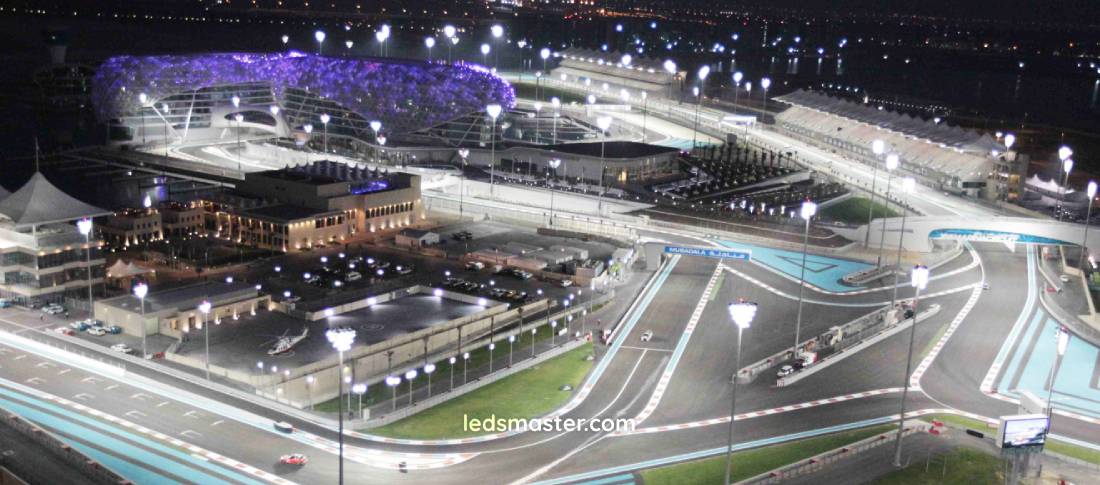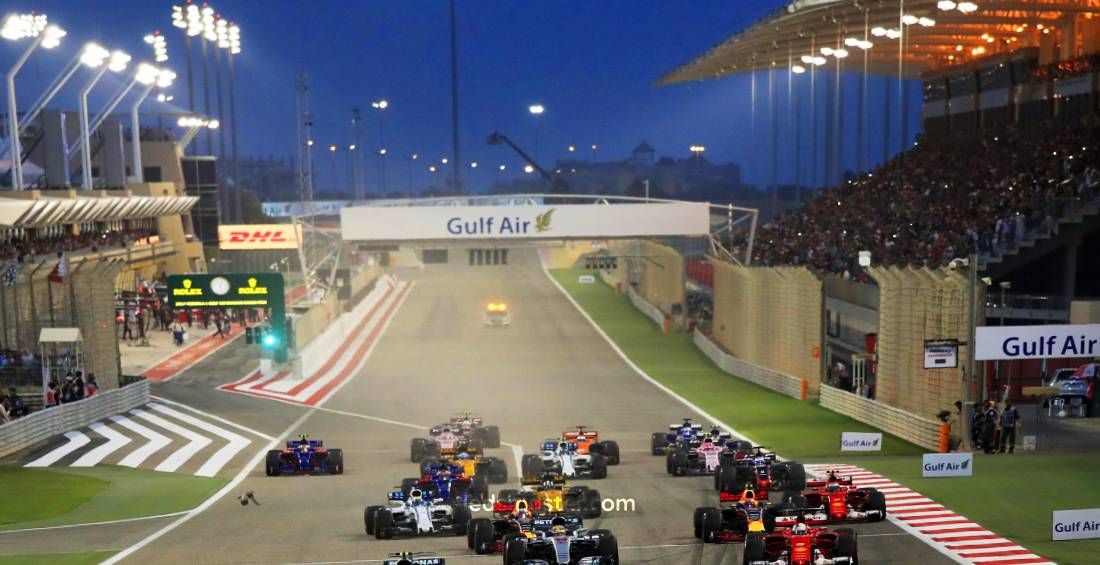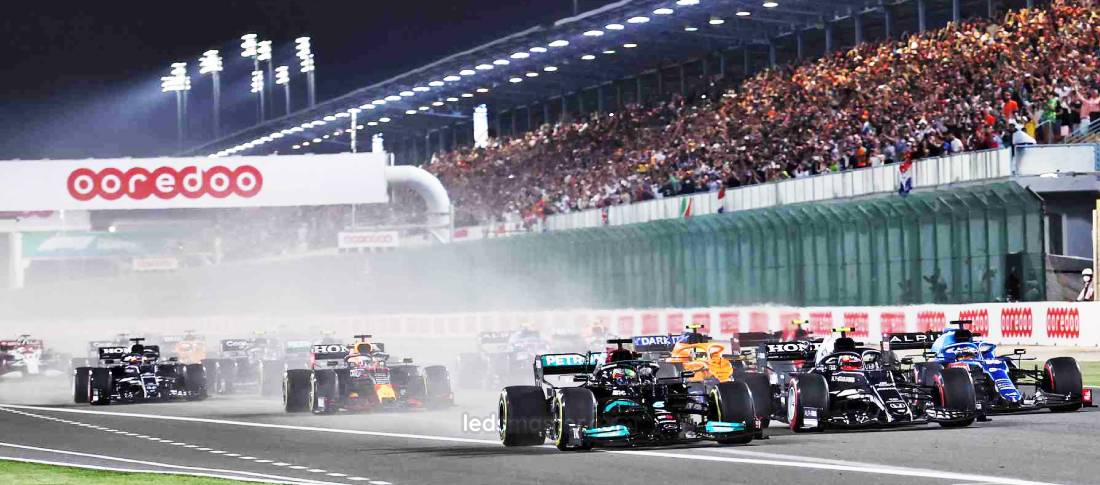Race tracks, whether for horse racing, car racing, or any other events, often require sophisticated lighting systems to ensure safety and visibility. However, maintaining a high-quality lighting system can become quite expensive over time. Managing energy consumption, reducing maintenance costs, and utilizing advanced technologies can provide substantial savings.
| Description | Total Cost | Estimated Savings | |
|---|---|---|---|
| LED Lighting Installation | Cost of switching from traditional to LED lighting for a race track. | $50,000 for 100 fixtures | $15,000 – $20,000 annually |
| Solar Energy Integration | Initial cost for installing solar panels to power lighting systems. | $200,000 for a 50 kW system | $30,000 annually |
| Wiring Upgrade | Total cost for upgrading electrical wiring to support energy-efficient lighting systems. | $40,000 – $80,000 | Energy savings of 20% on electricity costs |
| Smart Lighting Controls | Cost of installing smart controls like motion sensors and dimming systems. | $20,000 for full coverage | $10,000 annually |
| Utility Rebates | Total value of utility rebates available for adopting energy-saving lighting systems. | $5,000 – $15,000 (varies by location) | Immediate rebate, plus long-term savings |
Table of Contents
ToggleOptimizing Lighting Layout and Placement
Efficient Placement to Minimize Energy Use
In large race tracks, the layout and placement of lights are integral in ensuring that energy is not wasted. Properly planned light placement ensures that only areas that require illumination are lit up, while reducing the amount of energy needed to light surrounding sections. Rather than lighting up entire areas with the same intensity, more focused lighting strategies can help lower energy use while still ensuring safety and visibility.
Strategic lighting placement involves calculating the optimal number of light fixtures needed and the best angles for maximum efficiency. Instead of spreading lights evenly across the entire track, race tracks can concentrate lighting around the main event areas, such as the track, spectator stands, and important pathways. By carefully assessing which areas require the brightest lights and which can be dimmed or illuminated less, it is possible to reduce the total number of fixtures needed.
When race tracks invest in efficient lighting placement, they achieve a balance between sufficient visibility and lower energy consumption. Advanced lighting systems with the ability to direct light exactly where it’s needed help in reducing unnecessary energy expenditure.
Dimming Technology for Varying Needs
Dimming technology allows race tracks to adjust the lighting intensity depending on the specific requirements of each event or time of day. For example, during low-traffic periods, the track’s lights can be dimmed to save energy, while still maintaining enough illumination for safety. This is particularly useful during practice sessions or non-race days when the track does not require full lighting.
On race days, when high visibility is necessary for both participants and spectators, the lights can be brightened as needed. Dimming technology can also adjust based on the time of day or the specific lighting conditions required for certain races or events. Rather than keeping lights at full intensity 24/7, dimming controls enable race tracks to operate more efficiently, minimizing energy consumption while providing the appropriate lighting for each scenario.
Maintenance Strategies for Cost Reduction

Regular Maintenance to Extend Lifespan
Routine maintenance is one of the most effective ways to extend the lifespan of race track lighting systems and reduce long-term operating costs. Proactive maintenance ensures that lights and electrical systems are kept in optimal working condition, which can prevent expensive repairs and unnecessary replacements. Regular checks and upkeep help to ensure that lighting operates at maximum efficiency, minimizing wasted energy and the associated costs.
One of the primary reasons race track lighting systems become inefficient over time is due to a lack of routine cleaning and inspection. Dirt, dust, and other debris can accumulate on light fixtures, reducing their output and requiring more energy to achieve the same level of illumination. Regular cleaning not only maximizes the efficiency of the lights but also prevents wear and tear that could lead to premature bulb failure. This, in turn, reduces the frequency with which bulbs need to be replaced and prevents unnecessary downtime that could disrupt race schedules.
Another critical aspect of maintenance involves checking the wiring and electrical connections regularly. Over time, wiring can degrade, which can result in a reduction of power flow to the lights. When wiring becomes corroded or damaged, it can also create hotspots where energy is lost as heat, leading to inefficiency and increased energy consumption. This is why it is important to check wiring and replace any damaged cables before they cause further issues, ensuring that the lighting system operates at full capacity.
Monitoring and ensuring that all fixtures are aligned correctly is another important part of regular maintenance. Lights that are misdirected or poorly positioned will not provide uniform coverage, forcing other lights to work harder to illuminate the track. By recalibrating light fixtures and ensuring they are positioned properly, race tracks can avoid over-lighting specific areas and reduce unnecessary energy use.
Preventing the Need for Emergency Repairs
One of the most significant advantages of regular maintenance is the ability to reduce the likelihood of emergency repairs. Emergency lighting system breakdowns can be incredibly costly, both in terms of repair expenses and the potential for event disruptions. Emergency repairs often require a rushed response, which may involve more expensive labor costs and rushed part replacement. These disruptions can also lead to event delays, affecting revenue and reputation.
By scheduling periodic inspections and addressing any minor issues before they escalate, race tracks can avoid these expensive and disruptive repair situations. For instance, regularly checking the condition of light bulbs and replacing those that are nearing the end of their lifespan can prevent unexpected outages during key events. Additionally, by ensuring that the overall system is in good working order, race tracks can reduce the frequency of emergency calls to repair technicians, which are often much more costly than routine maintenance visits.
In addition to saving on repair costs, regular inspections help to identify potential issues early on, enabling race tracks to prioritize and budget for repairs before they turn into more significant problems. Maintenance contracts with lighting service providers can also provide race tracks with ongoing support and the assurance that their lighting systems are being regularly monitored for efficiency and functionality.
Improving Operational Efficiency
Routine maintenance also helps improve the overall operational efficiency of the lighting system. By ensuring that all components of the system are functioning optimally, race tracks avoid overuse of energy. For example, dimming features or motion sensors that are part of smart lighting controls will only function efficiently if the system is regularly tested. If there are any issues with these features, race tracks may be using more energy than necessary, which can lead to inflated energy bills.
Maintenance also involves checking the performance of automatic lighting controls, ensuring that smart systems are adjusting the lighting as needed according to event schedules, weather conditions, and spectator presence. If lighting systems are not calibrated or tuned properly, race tracks could be wasting energy by leaving lights on in non-critical areas or failing to dim them when possible. By performing regular operational checks, race tracks can ensure their lighting systems are running at peak efficiency and maximizing energy savings.
Upgrading Wiring and Infrastructure
One of the key benefits of upgrading the electrical infrastructure is the reduction in energy losses. Older wiring may have inherent inefficiencies, such as higher resistance or wear and tear, which can cause electrical current to dissipate as heat. This not only wastes energy but can also lead to overheating or damage to the system. By replacing old wiring with newer, more efficient materials, race tracks can improve the overall effectiveness of their lighting systems, reduce energy waste, and prevent the risk of fire hazards or system failure.
Upgrading the wiring is also crucial for ensuring compatibility with modern lighting technologies, such as LED lighting, smart controls, and motion sensors. These energy-efficient technologies require different wiring and electrical setups compared to older systems. If the existing infrastructure cannot handle the demands of new technologies, race tracks may not be able to fully benefit from the energy savings that these innovations offer.

Enhancing System Reliability
Upgraded wiring and infrastructure not only lead to energy savings but also improve the reliability and longevity of the lighting system. As electrical systems age, they become more prone to failure, which can lead to costly repairs and event delays. By replacing outdated components and wiring, race tracks reduce the likelihood of electrical issues that could compromise the lighting system’s performance. A more reliable system also reduces the need for frequent repairs and maintenance, which ultimately saves time and money.
Moreover, modern wiring and components are designed to be more durable and capable of handling higher loads, making them better suited for high-performance lighting systems that are often required for large-scale events. By investing in infrastructure upgrades, race tracks not only improve energy efficiency but also ensure that their lighting systems can meet the demands of current and future events without frequent interruptions or failures.
Future-Proofing the Race Track’s Lighting System
Upgrading wiring and electrical infrastructure is an investment in the future of the race track’s lighting system. As technology continues to advance, lighting systems are becoming increasingly sophisticated, incorporating features such as wireless control, automation, and integration with renewable energy sources. By updating the infrastructure now, race tracks can ensure that their lighting systems remain compatible with emerging technologies, enabling them to stay ahead of the curve and continue to reduce costs and improve sustainability.
Additionally, investing in modern infrastructure makes it easier for race tracks to adapt to evolving energy regulations and standards. As governments and regulatory bodies continue to implement stricter energy efficiency requirements, race tracks with outdated wiring may face difficulties in complying with these new standards. By upgrading their electrical systems, race tracks can avoid penalties and remain compliant with energy-saving regulations.
Collaboration with Local Utilities for Better Rates
Benefits of Utility Partnerships
Race tracks can greatly benefit from partnerships with local utility companies, which often offer specialized programs aimed at reducing energy costs. By working closely with utilities, race tracks can gain access to discounted energy rates, energy-saving incentives, and rebates. These partnerships often focus on reducing the financial impact of energy consumption while promoting sustainable practices.
Utility companies are eager to encourage energy-efficient upgrades and renewable energy integration, offering financial incentives to facilities that adopt greener technologies. For race tracks, these discounts or rebates can help to offset the cost of switching to energy-efficient lighting systems or integrating renewable energy sources like solar or wind power.
Incentives for Energy-Efficient Lighting Systems
Many utility companies offer incentives to facilities that install energy-efficient lighting systems. These programs are designed to reduce the overall energy consumption of businesses and large facilities, such as race tracks. By upgrading to energy-efficient lighting technologies, such as LEDs or automated lighting systems, race tracks may qualify for substantial rebates that reduce upfront costs.
These incentives can significantly lower the financial barriers to adopting more energy-efficient technologies. Whether it’s a partial reimbursement for purchasing new fixtures or assistance with installation, utility rebates make transitioning to better lighting systems more affordable. As a result, race tracks can save money both on their electricity bills and on the initial investment in the lighting system.
Participating in Demand-Response Programs
Demand-response programs are another opportunity for race tracks to lower their energy costs through partnerships with local utilities. These programs encourage businesses to reduce their energy consumption during periods of peak demand. Utilities often offer incentives to businesses that participate by lowering their energy usage during times when the grid is under stress, such as on hot days when air conditioning demand is high or during high-traffic event periods.
Race tracks can collaborate with utilities to monitor peak demand times and adjust their lighting accordingly, either by dimming lights or turning them off in less critical areas. Participating in these programs allows race tracks to contribute to the stability of the grid while simultaneously reducing their energy bills.
Generating Power through Renewable Energy Sources

For race tracks that have the capacity to generate their own energy, utilities may offer incentives for integrating renewable energy sources, such as solar panels or wind turbines. In some cases, race tracks can sell any excess energy they generate back to the grid, earning additional revenue or credits.
Working with utility companies to integrate renewable energy sources can reduce reliance on traditional power grids and ensure a more sustainable energy model. Many utilities now offer guidance and financial incentives for businesses interested in switching to renewable energy, making it a more accessible option for race tracks looking to cut costs in the long run.
Long-Term Cost Efficiency through Smart Practices
Embracing Energy-Efficient Technologies
For race tracks, long-term cost efficiency starts with the adoption of energy-efficient technologies. As lighting systems make up a large portion of race track energy consumption, focusing on energy-efficient fixtures such as LED lighting, combined with smart control systems, can yield substantial savings over time. These technologies consume far less energy while providing optimal visibility, making them an excellent investment for both reducing operating costs and improving performance.
In addition to lighting, race tracks can invest in energy-efficient HVAC systems, motion-sensing technologies, and automated energy management tools. By transitioning to these technologies, race tracks can dramatically lower their energy bills while maintaining a comfortable environment for spectators and participants.
Optimizing Existing Systems for Efficiency
Improving the efficiency of existing lighting systems is just as important as upgrading to newer technologies. Race tracks can implement energy-saving practices such as regular maintenance, cleaning, and ensuring that all systems are operating at peak performance. In many cases, a simple optimization of existing infrastructure can yield noticeable reductions in energy costs.
For example, reducing the number of lights used in less critical areas or adjusting the lighting schedules to better align with event times can lead to energy savings without sacrificing performance. Race tracks can also ensure that lighting controls are properly calibrated, allowing them to dim lights during non-event hours and only use full lighting when it’s absolutely necessary.
Renewable Energy Integration for Long-Term Savings
Integrating renewable energy sources, such as solar and wind power, into the energy mix can help race tracks achieve long-term cost savings. The initial investment in renewable energy infrastructure may be higher, but over time, the savings in energy bills can offset these costs. Additionally, using renewable energy can provide race tracks with a reliable and sustainable energy source, reducing their dependence on traditional power grids.
By combining renewable energy with energy-efficient lighting and smart control systems, race tracks can create a holistic energy plan that minimizes costs while maximizing sustainability. The ability to produce their own energy not only offers potential savings but can also provide race tracks with more control over their energy usage and expenses.
Long-Term Maintenance and Energy Management
A long-term approach to cost efficiency involves maintaining and managing energy systems for the best possible performance. Regular checks, inspections, and updates to energy management strategies can ensure that race tracks remain efficient over time. Building a culture of sustainability means continuously optimizing systems to meet changing energy needs and technological advancements.
By staying proactive with upgrades and adjustments, race tracks can continue to benefit from lower energy costs and reduced environmental impact. Additionally, investing in training for staff on energy-saving practices ensures that the entire team is engaged in maintaining energy efficiency.
Monitoring and Analyzing Energy Usage
To ensure that energy-saving practices are consistently followed, race tracks should regularly monitor and analyze their energy usage. Smart metering and energy management systems can provide real-time data, helping track operators identify any areas of concern and make timely adjustments. Continuous monitoring ensures that energy-saving strategies are always optimized and that any inefficiencies are detected early.
This data-driven approach helps race tracks make informed decisions about energy consumption, offering insights into potential upgrades, adjustments, or changes to lighting schedules. It also helps race tracks measure the success of their energy-saving efforts, offering proof of the financial benefits of adopting smarter energy practices.
Conclusion
Smart solutions for reducing race track lighting expenses focus on energy-efficient technologies, regular maintenance, and long-term strategies. Upgrading to LED lighting, utilizing renewable energy, and collaborating with local utilities can significantly lower energy costs while supporting sustainability. Routine maintenance ensures optimal system performance, extending the lifespan of equipment and reducing costly repairs. Additionally, upgrading electrical infrastructure and using smart controls help maximize energy savings. These strategies create a more cost-effective and sustainable race track environment, balancing financial performance with environmental responsibility.

